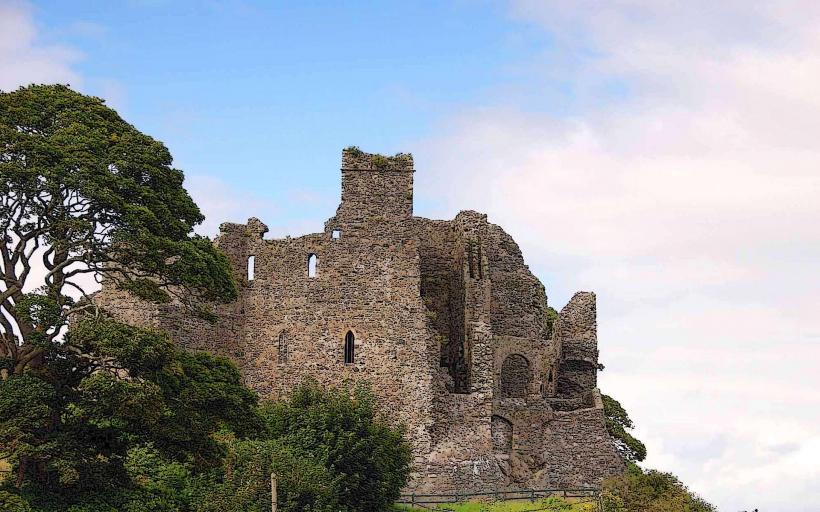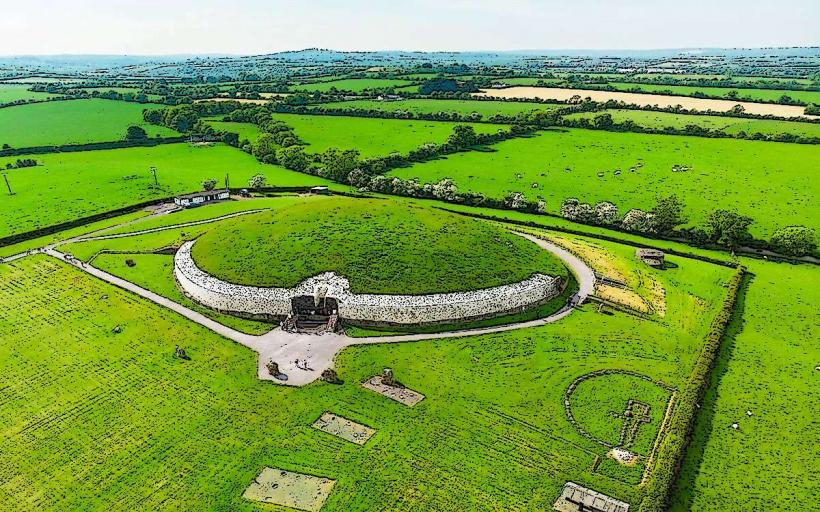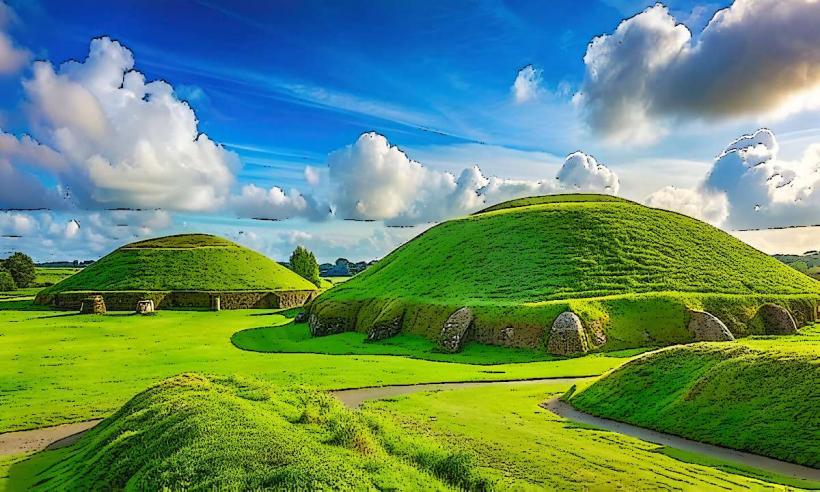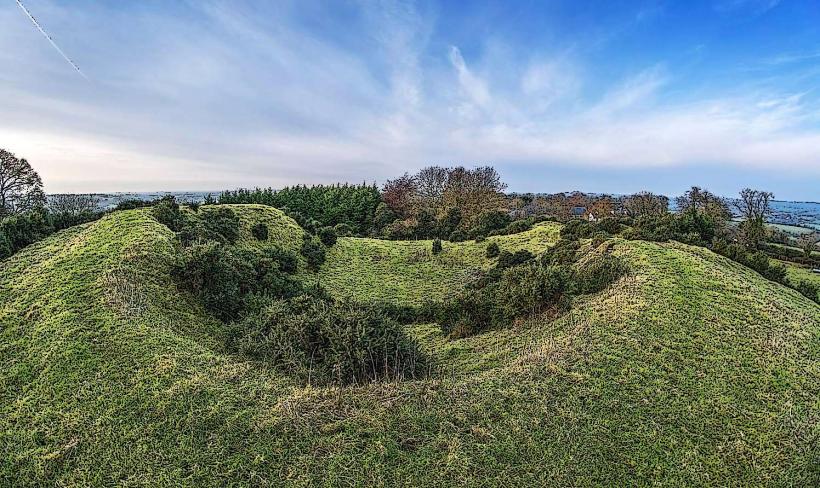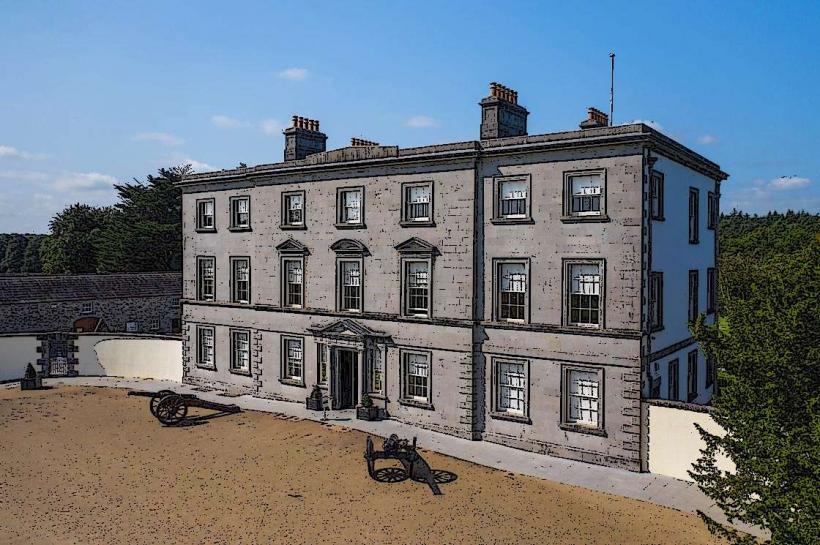Information
Landmark: Hill of SlaneCity: Louth
Country: Ireland
Continent: Europe
Hill of Slane is a historically and archaeologically significant site located in County Meath, Ireland, and is often associated with early Christian history, as well as ancient Irish kingship. It is situated about 8 kilometers (5 miles) east of Navan, on a hill overlooking the surrounding countryside and the Boyne River.
1. Historical and Religious Significance
- Christianity and St. Patrick: The Hill of Slane is most famously associated with St. Patrick, the patron saint of Ireland. According to legend, in 432 AD, St. Patrick lit the Easter Fire on the Hill of Slane to defy the pagan High King Lóegaire mac Neill of Tara, who had decreed that no fires should be lit until the king's fire was kindled. St. Patrick's act symbolized the arrival of Christianity in Ireland and his resistance to the pagan traditions of the time. The hill became an important Christian pilgrimage site.
- Royal Connection: Before its Christian association, the Hill of Slane was believed to have been a place of ancient royal power. It is thought to have been the location where the Kings of the Dál gCais, an important early medieval kingdom, held ceremonial events and had connections to earlier Celtic rituals and kingship.
2. Archaeological Features
- St. Patrick’s Church and the Cross: The Hill of Slane features the ruins of St. Patrick’s Church, which dates back to the 12th century. The church was built on the site where St. Patrick is believed to have celebrated Easter. There is also a high cross nearby, which was erected in the 19th century and symbolizes the merging of Ireland's pagan and Christian traditions.
- Mound and Monument: At the top of the hill, visitors can see a large mound that may have been a ritual site or royal residence in pre-Christian times. It’s possible that the mound was used as a location for ceremonial feasts, as part of the ancient Irish kingship traditions. Some believe it was a site for the coronation of kings.
- Surrounding Burial Sites: The Hill of Slane also contains ancient burial grounds. The site is rich in archaeological remains, though much of it has been eroded over time.
3. The Slane Castle Connection
- Slane Castle, located a few kilometers away from the Hill of Slane, is also an important landmark in the area. While not directly on the Hill itself, it is an iconic feature of the surrounding landscape. The castle dates to the late 18th century and has long been associated with the Conyngham family. It is also known for hosting open-air concerts, including performances by international artists like U2 and The Rolling Stones.
4. The Slane Fire
- The Easter Fire that St. Patrick supposedly lit on the Hill of Slane is one of the most famous events in Irish history. The fire was a direct challenge to the King of Tara’s authority. When the King ordered that no fires should be lit until the royal fire was ignited, Patrick defied him by lighting his own fire, a symbol of the Christian light. The King's response to this act, and his eventual conversion to Christianity, played an important role in the spread of Christianity throughout Ireland.
5. Modern-day Importance
- Today, the Hill of Slane remains an important cultural and tourist site, drawing visitors interested in both its Christian and pagan history. It is a peaceful spot with spectacular views of the Boyne Valley and surrounding countryside, making it a popular location for those interested in Irish history, archaeology, and religion.
- Pilgrimage Site: The site still attracts pilgrims and visitors, especially during Easter, when many people come to the Hill to commemorate the lighting of the fire by St. Patrick.
- Conservation Efforts: Efforts have been made to preserve the site, including the ruins of St. Patrick’s Church and the high cross, so that future generations can appreciate its historical significance.
6. Conclusion
The Hill of Slane is a site of immense historical importance, with connections to both Celtic pagan traditions and the early Christian period in Ireland. It stands as a symbol of the transition between paganism and Christianity, with its association to St. Patrick being the most prominent feature. It is a peaceful, scenic location with archaeological features that highlight Ireland’s rich cultural history. The hill continues to attract visitors from around the world who are drawn to its spiritual significance, archaeological value, and the beautiful views it offers over the surrounding landscape.

